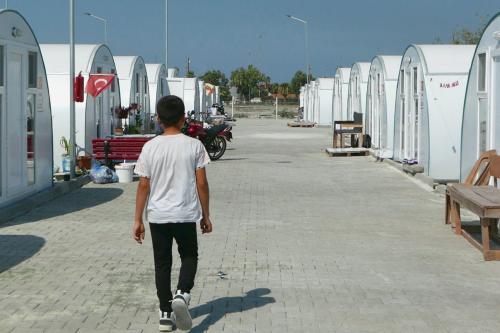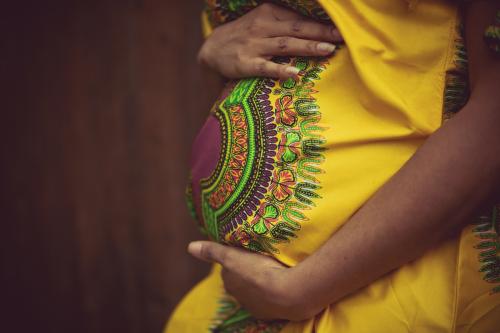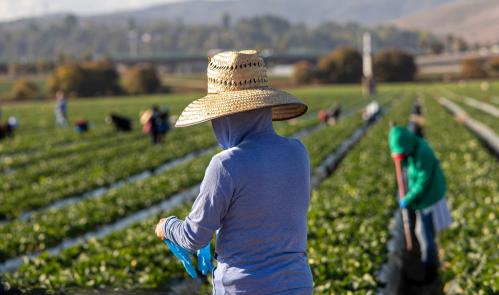Editor’s note: This article was originally published in Issue 38 of Forced Migration Review.
Around two-thirds of the world’s 27 million internally displaced persons (IDPs) live in situations of protracted displacement.[1] The IASC Framework on Durable Solutions for IDPs identifies three settlement options for durable solutions for IDPs: return to their community of origin, settlement in the area to which they have been displaced or settlement in another part of the country.[2] While return is the settlement option usually emphasised by governments and other international actors, other durable solutions – particularly local integration – should be considered, especially when IDPs want local integration or when they have been displaced for long periods of time and their return is blocked.
In order to explore both the good practices which have facilitated local integration and the obstacles to it, the Brookings-LSE Project on Internal Displacement and the Internal Displacement Monitoring Centre, in collaboration with UNDP and UNHCR, organised an expert seminar in Geneva in January 2011. The seminar focused on six countries experiencing protracted internal displacement – Burundi, Colombia, Georgia, Serbia, Sudan and Uganda – each of which was the subject of field research commissioned for this seminar.[3] In most cases (Colombia, Georgia, Serbia and Burundi), countries have experienced multiple waves of displacement. In all six cases, governments have promoted return – even in cases where returns are not possible due to continued insecurity.
In spite of official insistence on return as the preferred solution, returns are often difficult. Return has been the settlement option chosen by some 90% of IDPs in Uganda and around 50% of IDPs in Burundi and southern Sudan (though the figure for the latter includes those who have returned to southern Sudan[4] as a whole, not necessarily to their places of origin). In Colombia, Georgia and Serbia, only a small minority have returned due to insecurity and the absence of political resolution of the conflict.
Local integration is a qualitatively different settlement option than return and settlement elsewhere since it does not usually involve physical movement and IDPs may not make a conscious choice to integrate locally at a certain point in time. While governments all use the term ‘return’ when discussing the return of IDPs to their places of origin, they use different terms for local integration. For example, it is called ‘improving living conditions’ in Serbia, ‘supporting decent living conditions for the displaced population and their participation in society’ in Georgia, and ‘stabilisation’ in Colombia. Settlement options often evolve over time.
The research in all six countries shows that there has been some progress towards durable solutions through local integration. IDPs in Burundi stated that the main factor facilitating their local integration was their strong desire to remain where they are. They had forged strong relationships with their non-displaced neighbours, participated in community affairs, had access to documentation and services to the same extent as their non-displaced neighbours, and felt safe. In southern Sudan, IDPs had adapted their livelihoods to the local setting (from cattle to agriculture) and their displacement was not a barrier to obtaining documentation, receiving health care or being able to participate in public life.
IDPs are not a monolithic group and their different settlement preferences are based on their personal experience and circumstances of war, even within one family. The experiences of individuals, families or groups from specific areas may make them opt for local integration even if return is considered possible by others. In Serbia, Roma IDPs are less interested in return than Serb IDPs, and while older IDPs would prefer to return if they could remain under the jurisdiction of Serbia, young IDPs are not interested unless livelihood opportunities are made available. Indigenous communities in Colombia, for whom return to their place of origin is of vital importance, have been displaced several times and still continue to return.
IDPs may also prefer mixed settlement options, for example by commuting to their area of origin to work their land. In Uganda, some IDPs have simultaneously returned and integrated by using land at their place of origin for shelter and cultivation while maintaining a business at their place of displacement. In Burundi, the majority of IDPs still cultivate their land at their place of origin while living in IDP settlements. The intentions and preferences of IDPs may also change over time and according to where they are displaced; even in protracted situations, displacement is a dynamic process.
Impediments to local integration
In all the case studies, difficulties around three inter-related issues were major impediments to local integration: access to land and security of tenure, housing, and livelihoods. Many IDPs in Burundi live in settlements built on land that may be subject to various state or private claims, while in southern Sudan, IDPs have often occupied the houses of refugees who have then returned and claimed it back. IDPs in protracted situations continue to live in dilapidated and overcrowded dwellings, often with inadequate security of tenure. Housing assistance programmes in Colombia, Georgia and Serbia, for example, have not led to widespread acquisition of permanent housing.
Livelihoods are key to local integration. On being evicted (a process made easier by their weak security of tenure), IDPs in southern Sudan also lose their crops and access to livelihoods. In Uganda access to livelihoods programmes is difficult, as most only target areas of return. In Serbia in 2010 a survey indicated that IDPs are twice as likely to be unemployed as their non-displaced neighbours.
One difference between the displacement situations depicted in the six case studies is the attitude of the host community towards IDPs. In Uganda, people were originally welcoming but gradually grew tired of hosting IDPs. However, host community members and IDPs in Burundi and Georgia reported they had always had friendly relations and that inter-marriage was not uncommon. In Colombia, internal displacement has strained local resources; local governments were willing to host IDPs but sometimes lacked absorption capacity. Local authorities are essential in facilitating local integration but too often local governments are mandated by central governments to provide services to IDPs without a corresponding transfer of funds to the local level. Political buy-in to create the legal, policy and programmatic instruments enabling local integration is necessary to ensure that IDPs living in host communities feel secure, have access to services, and receive the support they need.
Development issues such as property rights, livelihoods, services and governance are crucial to the ability of IDPs to integrate locally. The research found that development organisations are involved in the internal displacement situations covered by the case studies but not to the extent needed. In Uganda, most agencies noted a critical disconnect between humanitarian support and transitional and development programmes. Ideally, early recovery programmes would address poor land adjudication by strengthening governance and judicial systems, as well as supporting livelihoods interventions before returns begin. Development organisations such as the World Bank and USAID have committed significant funding to IDPs in Georgia, though this has mainly been directed to the newly displaced rather than people in protracted displacement. In Burundi, UNDP has undertaken socio-economic studies of IDP settlements in three provinces to assist the most vulnerable to find sustainable and lasting solutions, and in Colombia organisations such as the Inter-American Development Bank have taken on IDP issues – but the transition from emergency support has not usually been smooth.
Local integration and return should not be considered as mutually exclusive solutions. IDPs can be encouraged to integrate locally while retaining the possibility of eventual return when conditions permit. Some governments may be more accepting of integration if it is presented as an interim or temporary measure even though there is a contradiction between the terms ‘interim’ integration and ‘durable’ solutions.
IDPs have a right to a durable solution. Given the difficulties with returns in many areas, more attention and support are needed for local integration as a feasible alternative for many of the world’s IDPs who are living in protracted displacement. IDPs should have the opportunity to get on with their lives.
Elizabeth Ferris ([email protected]) is Co-Director of the Brookings-LSE Project on Internal Displacement (https://www.brookings.edu/projects/idp.aspx) and Kate Halff ([email protected]) is Head of the Norwegian Refugee Council’s Internal Displacement Monitoring Centre (http://www.internal-displacement.org).
For more information on the seminar see: http://www.internal-displacement.org/thematics/durable-solutions
[1] See the report of the Expert Seminar on Protracted Internal Displacement, June 2007. https://www.brookings.edu/fp/projects/idp/conferences/20070622.pdf
[2] IASC Framework on Durable Solutions for IDPs https://www.brookings.edu/reports/2010/04_durable_solutions.aspx
[3] The seminar report is available at:
http://tinyurl.com/IDMC2011-localintegration
The six case studies are available at:
http://tinyurl.com/Brookings2011casestudies
[4] Since July 2011, the separate state of South Sudan.



Commentary
Op-edProtracted Internal Displacement: Is Local Integration a Solution?
October 11, 2011